The shading. How to protect the orchard from the sun: Shade Mesh and other solutions
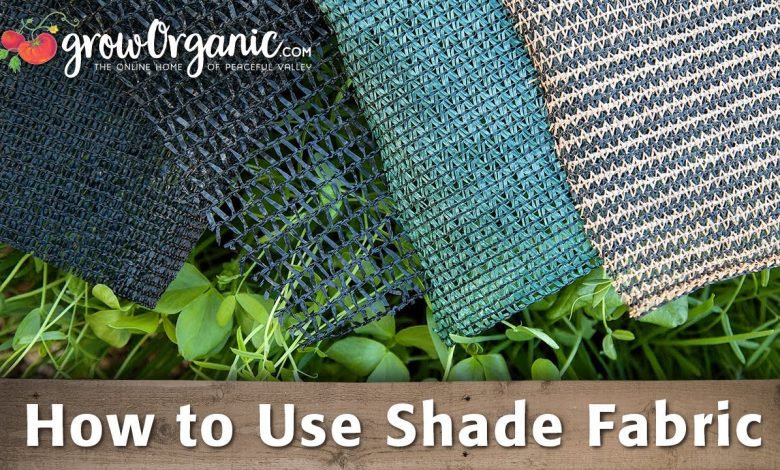
Today we will talk about shading, a protected cultivation technique that improves the harvest and protects plants from inclement weather (excessive sun, wind or heat…) that, otherwise, could greatly reduce the quality and yields of crops..
Shade nets are used in summer in orchards or fruit plantations where very high temperatures are reached in summer and there is hardly any rainfall, such as rooftop orchards or open plantations located in full sun. In these conditions of high insolation and low humidity, the crops run the risk of suffering from heat stroke or burns on the leaves that reduce the harvest and can even spoil it.
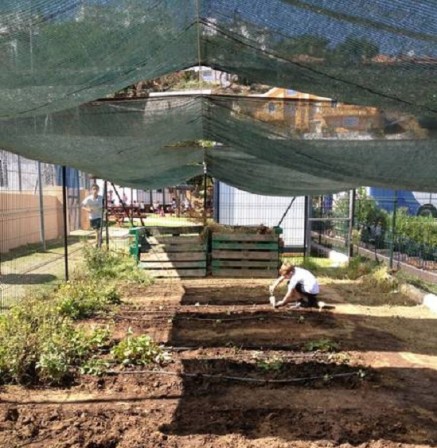
Shade nets of various materials, sizes and colors can be used to protect crops from excessive sun and heat. In addition, as we will see in the last section of the post, we can also opt for other types of shading for the orchard and garden, such as pergolas with climbing plants.
What is a shade cloth?
A shade mesh is a woven fabric of polyethylene, polyester, raffia threads or other materials that, thanks to different pigmentations, absorbs or reflects part of the sun’s radiation, protecting crops from high temperatures.
The shade mesh prevents the air surrounding the crops from heating up as much as it would from direct sunlight. Soil moisture is better maintained after irrigation and evaporation and evapotranspiration are reduced. All this translates into a better harvest and savings in irrigation water.
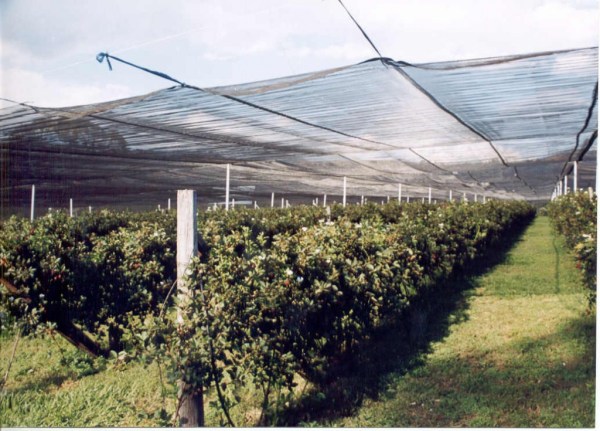
Depending on the density and type of shade mesh, the light is reduced from 30 to 90%. It is important to first determine the light needs of each crop in order to choose the right shade cloth.
Benefits of using shade nets
Installing a shade mesh is especially beneficial in delicate crops such as vegetables, especially those that are more sensitive to the sun (tomatoes, peppers, courgettes…) or to bird attacks, such as hedges and wild fruit bushes.
According to several studies (see References), shading increases the production and quality of the harvest in vegetables and shrubs such as blueberry.
The shading technique not only reduces damage by pests and physiopathies in crops that are more sensitive to direct sunlight (cracks in tomatoes or yellowing, irregular growth of courgettes…), but also increases the quantity and quality of the fruits.
Other advantages of shade nets
In addition to protection from the sun and heat, shade nets have other advantages:
- Protect crops from wind, hail or other aggressions.
- Limit the impact of arid and desert climates and soften the temperature differences between day and night.
- Reduce damage caused by pests, weeds, birds and other predators.
- Reduce evaporation and favor the retention of moisture in the soil, which implies less need for irrigation.
- Slightly modify the crop cycles, bringing forward the harvest or favoring production out of season.
colored shade nets
In addition to conserving moisture and reducing wind and direct radiation, shade cloth, if colored, can have other benefits.
Several scientific studies and field tests reveal other advantages of using colored shade nets in relation to improving fruit ripening and quality as well as protection against pests.
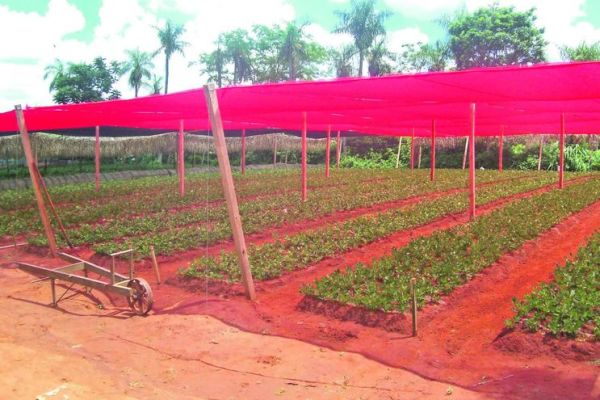
The colored meshes modify the spectrum of the filtered light, allowing light of different wavelengths and colors to penetrate (red, yellow, blue, pearl grey…). The different colors affect the growth of plants and even their composition.
According to these studies, red netting, for example, enhances photosynthesis by stimulating vegetative growth, which leads to larger leaves. In tomato and pepper, even, the red mesh causes more and larger fruits to be produced, and they have a higher content of lycopene and other nutrients.
Types of shade nets for the orchard
Here are some ideas for shading the orchard and garden using shade mesh. Depending on the extension and the type of crops, one shading mesh or another will be more convenient.
Shading mesh for cultivation table
Small structure of wooden poles, bamboo canes or other material that, like a pergola, serves as a support for a shade mesh.
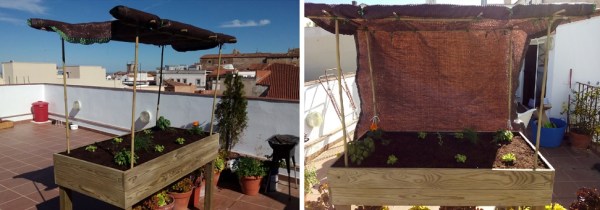
Shade nets for cultivation tables are widely used to protect crops in rooftop orchards or those that are very exposed to the sun and wind in extremely hot and dry seasons where direct sun can burn the crops.
Shades or mesh houses
The «mesh houses» or shade houses have the function of shading the crops in open land. They provide 30-50% shading and moderate the temperature in the hottest hours of the day.
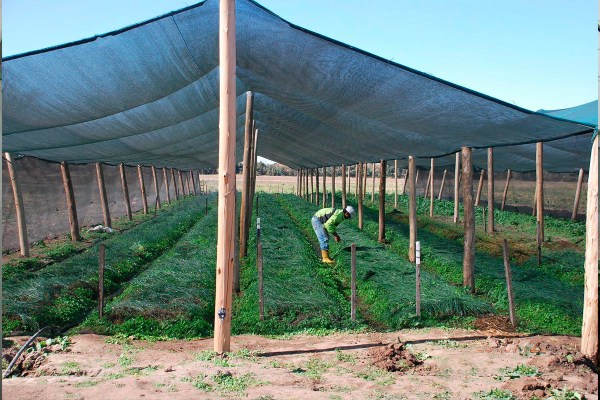
They are pole structures that allow the fixing of shade nets, anti-insect nets, anti-bird nets or other protections at a height that allows the cultivation work to be carried out comfortably.
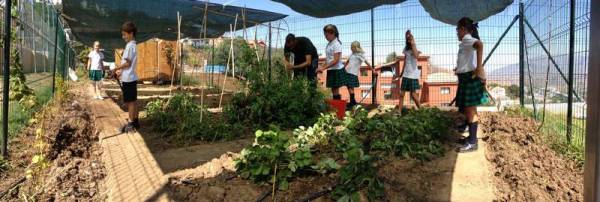
Shades are very useful in school gardens or other types of community gardens, where, in addition to protecting the plants, they protect the gardeners from the sun and make cultivation work more comfortable.
Shading between crop rows or partial shading
Placing elongated shading meshes between the different crop lines serves to delay the harvest in tall vegetables and with staggered maturation, such as tomato or pepper.
The objective of this type of shading is to lengthen the harvest season and delay the maturation of part of the crop.
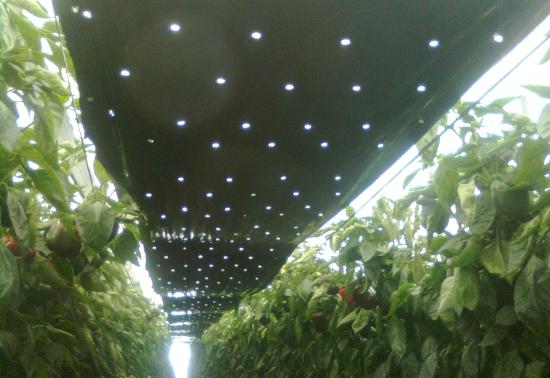
Once the fruits below begin to ripen, changing colour, the lower-middle part of the plants is shaded to delay their ripening. In this way, the upper part, where the most recent fruits are still fattening, continue to receive the same sun and fattening without problems, thus achieving the same ripening of the fruits of the plant and delaying the start of the harvest.
Shade mesh tunnels
They are simple and cheap structures that support the shade mesh that protects the crop. The structure is made up of a row of arches (bamboo, PVC, galvanized iron, thick wire…) between which the shade mesh extends.
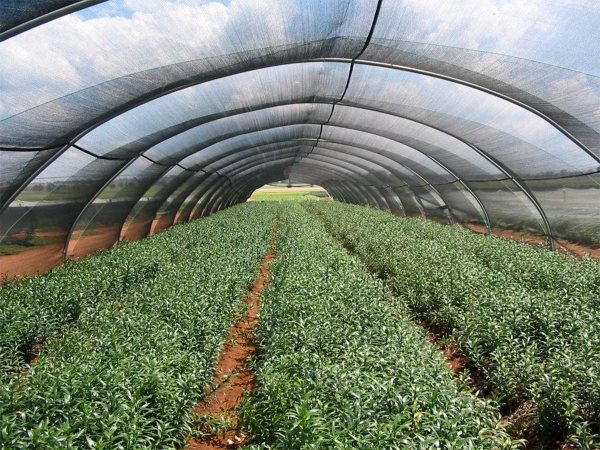
In this case, the shade mesh not only reduces sunlight, but also provides a more complete protection to the crop, reducing damage from external agents such as strong winds, hail, or pests and creating a microclimate inside the tunnel that favors the growth and maturation of plants.
Other ways to shade the garden
In addition to the use of shade nets like the ones we have just seen, there are other possible solutions to achieve shade in the orchard. Here are some ideas to get a shaded area in the orchard or garden.
Shading by grapevine
The shade vine is a classic of Mediterranean and Atlantic orchards and gardens that provides us with a cool, shady place and, at the same time, very striking due to its beauty.
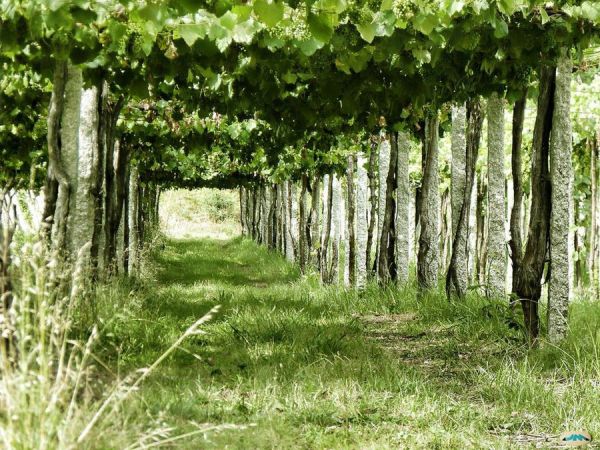
To make a shade of this type you will need to previously install the two parallel lines of posts and the horizontal structure that rests on them to later plant the climbing vines next to each of the posts.
Climbing plants for shade pergolas
If you prefer to do a shade like the shade vine but with plants other than vines, this is also possible. Any type of climbing plant that is suitable for the climate you are in will do.
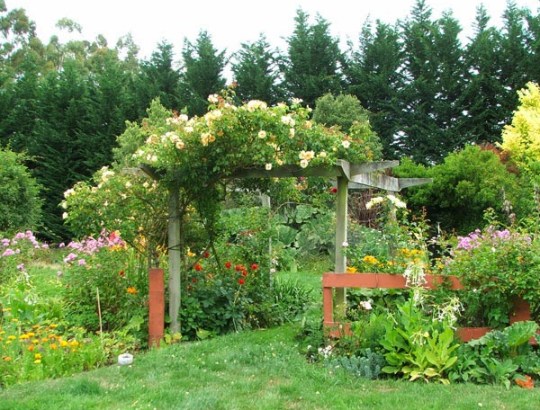
This shading with climbing plants will be very useful to protect small areas of the patio or garden from the sun, where we can place a flowerpot or group of crops in pots, seedbeds and other delicate plants of the garden.
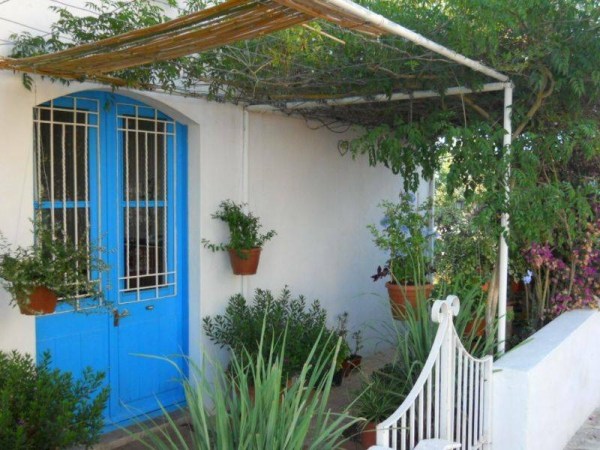
Plants for shade pergolas can be edible crops (such as chayote, small squash) but also ornamentals with flowers like the ones we will see below. These plants, in addition to giving us a shaded area, will provide the advantages of having flowers in the garden.
Examples of flowering climbing plants for shade pergolas:
- honeysuckle
- clematis
- climbing roses
- clematis
- passionflower
- Jasmine
- glycine
- Ivy
- purple bell
- bougainvillea
- Campsis or trumpet creeper
Shading of gardens and orchards with sail awnings
Sail awnings are versatile and very easy to install. They are very useful for providing shade in patios or small gardens, where they can be hooked to the walls or to any structure or post that is well anchored to the ground.
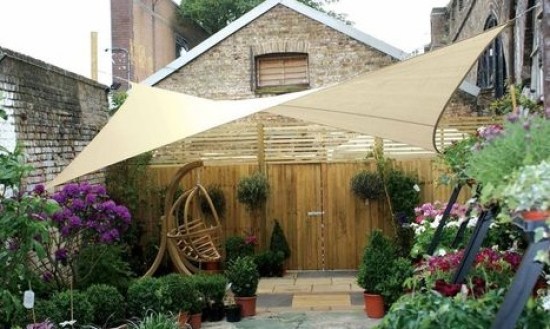
These are just some examples of shading for the orchard and garden, but if you know of other types of mesh or shading systems, do not hesitate to leave us your suggestions or photos in the comments thread below.
References
- Schiappacasse C, F. et al., 2006. Effect of Four Shading Levels on Rod and Bulb Quality of Two Lilium (Lilium spp.) Cultivars. Technical Agriculture, vol. 66 (4), p. 352-359.
- Santos, B. et al., 2010. Vegetable production in protected environments: structures for protected agriculture. EDIS (Electronic Data Information Source of Institute of Food and Agricultural Sciences), vol. 2010 no. 6.
- Espinoza Morales, JL, 2010. Effect of transmitted radiation and shade mesh color on plant growth and yield in horticulture. Applied Chemistry Research Center (Mexico).
- Ayala-Tafoya, F., 2011. Tomato growth and yield in response to solar radiation transmitted by shade nets. Terra Latinoamericana, vol. 29 (4), p. 403-410.
- Rodríguez Beraud, MM & Morales Ulloa, DM, 2015. Effect of shading nets on the production and quality of blueberry fruits (Vaccinium corymbosum L.) cv. Brigitta. Scientia Agropecuaria, vol. 6 (1), p. 41-50.

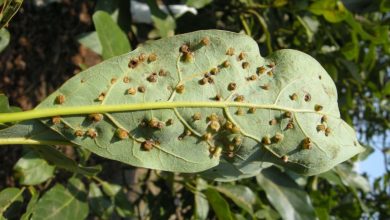
![Photo of How to Plant Peonies in Your Garden: [Complete Guide + Step by Step]](https://www.complete-gardening.com/wp-content/uploads/2022/08/how-to-plant-peonies-in-your-garden-complete-guide-step-by-step-390x220.jpg)
![Photo of Plant Cilantro: [Cultivation, Care, Land, Irrigation and Pests]](https://www.complete-gardening.com/wp-content/uploads/2022/08/plant-cilantro-cultivation-care-land-irrigation-and-pests-390x220.jpg)
![Photo of Chinese Carnation: [Cultivation, Care, Pests and Diseases]](https://www.complete-gardening.com/wp-content/uploads/2022/08/chinese-carnation-cultivation-care-pests-and-diseases-390x220.jpg)